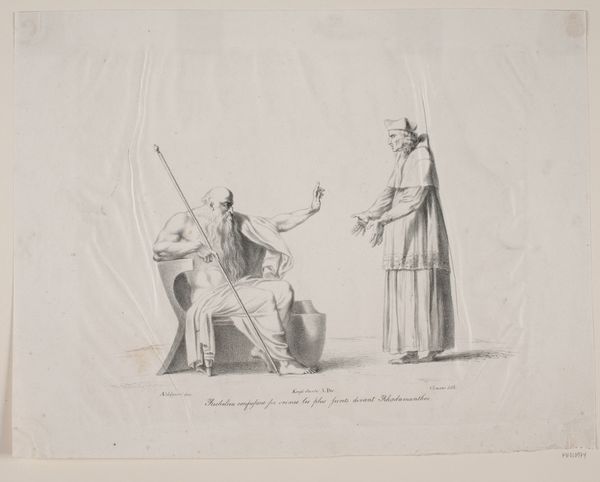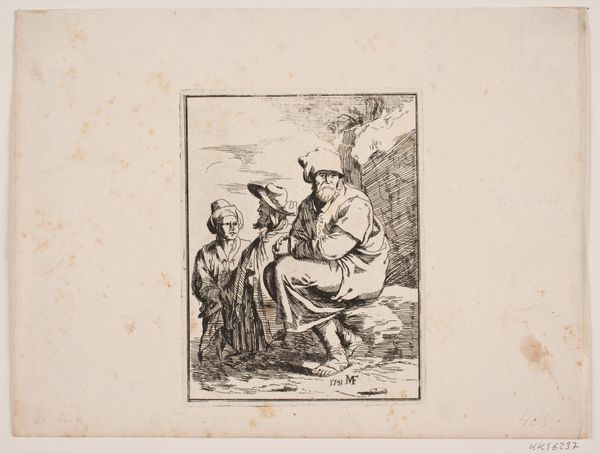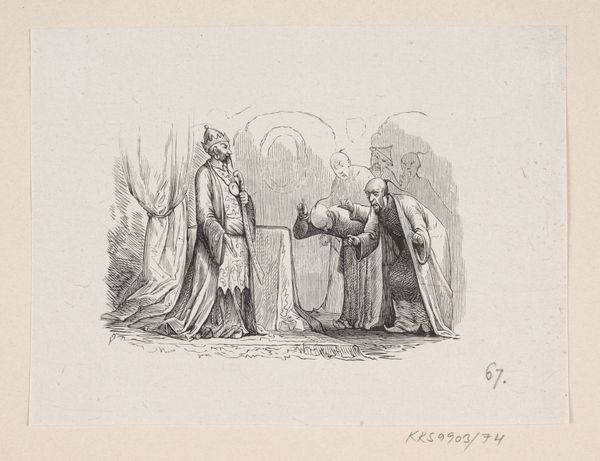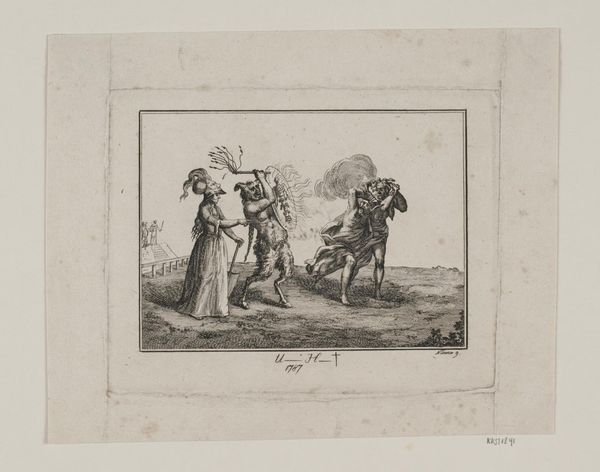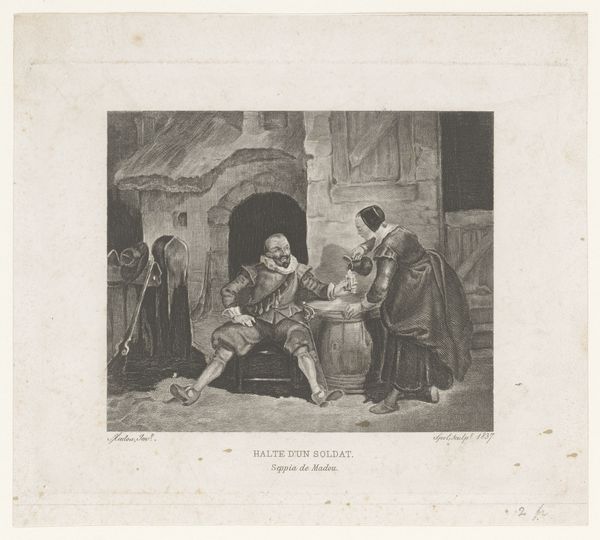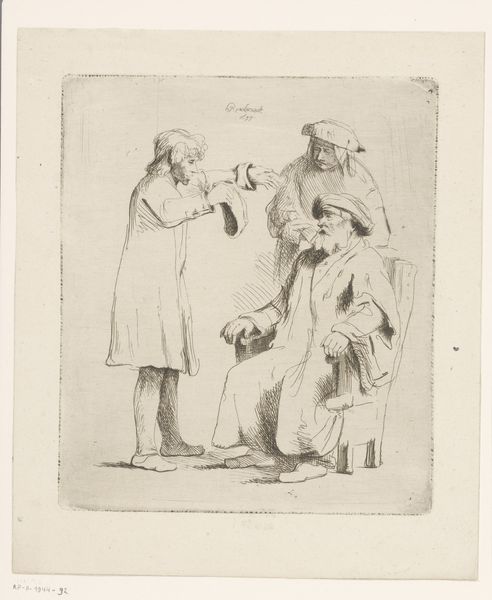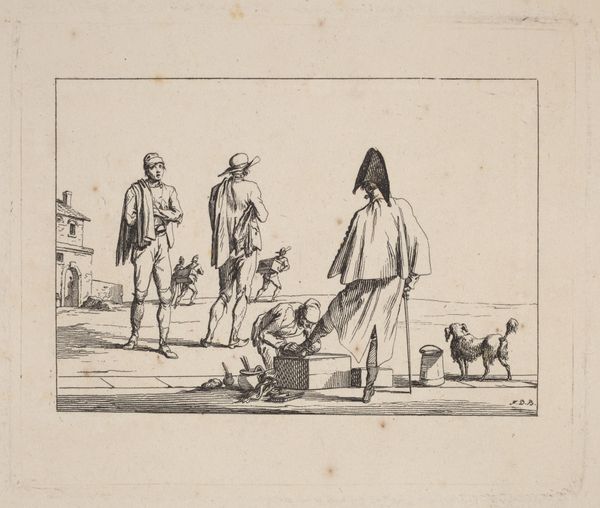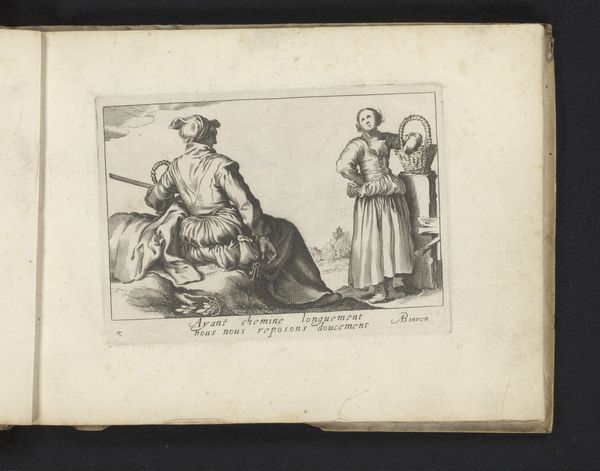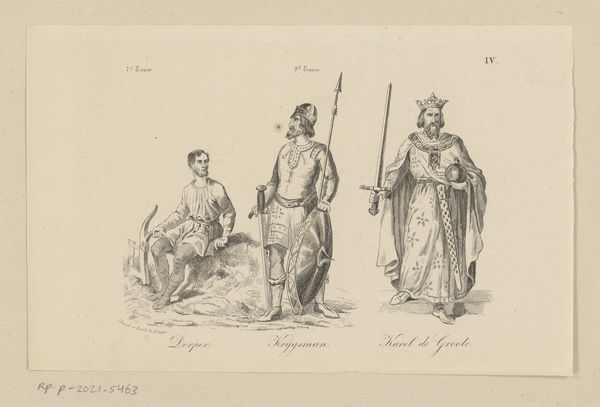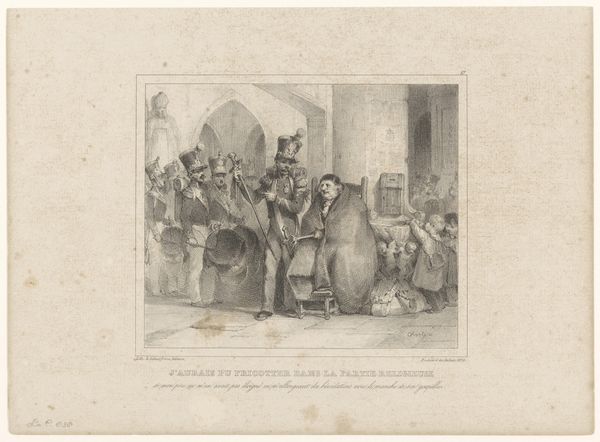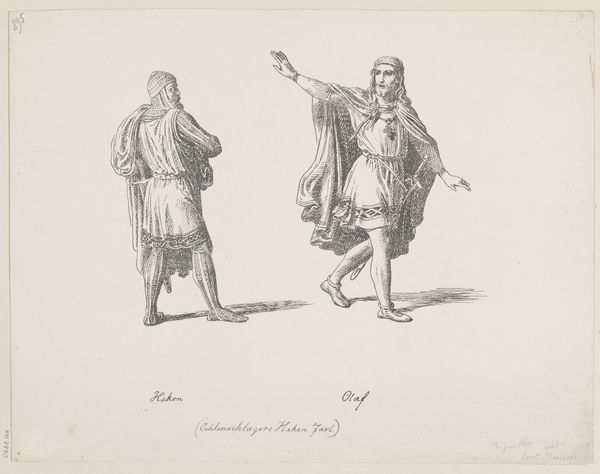
drawing, lithograph, print
#
drawing
#
allegory
#
lithograph
# print
#
figuration
#
history-painting
#
academic-art
Dimensions: 247 mm (height) x 323 mm (width) (bladmaal)
Editor: So, here we have "Richelieu for Rhadamanthos," a lithograph by J.F. Clemens from the early 1820s. It's quite striking in its starkness; just these two figures dominating the space. What do you see in this piece that draws you in? Curator: The encounter between Cardinal Richelieu and Rhadamanthus resonates deeply with cultural memory. Rhadamanthus, as a judge of the dead in Greek mythology, represents a system of justice. Richelieu's presentation before him speaks to historical accountability. It prompts questions about power and judgement. Notice how Richelieu is depicted, with his garments meticulously rendered, compared to Rhadamanthus' more classical, almost stoic, nudity. Editor: I see that contrast, the sort of vulnerability versus formality. Is the implication that Richelieu’s earthly power means nothing to Rhadamanthus? Curator: Precisely. His gesture may suggest defiance but his very presence underlines the inescapable nature of reckoning. Consider, too, the period it was created; just after the Napoleonic era, with its overtones of moral scrutiny of powerful men. Do you see echoes of similar themes in more contemporary works? Editor: That's fascinating! I'm now thinking of modern political cartoons – this feels like an ancestor. Curator: Exactly. The symbolic language of art, like spoken language, shifts and adapts but core concerns remain. And what's stayed with you about it? Editor: I think I'll remember to think about the visual dialogue artworks create with history – how they hold those stories and make us think about them differently.
Comments
No comments
Be the first to comment and join the conversation on the ultimate creative platform.
